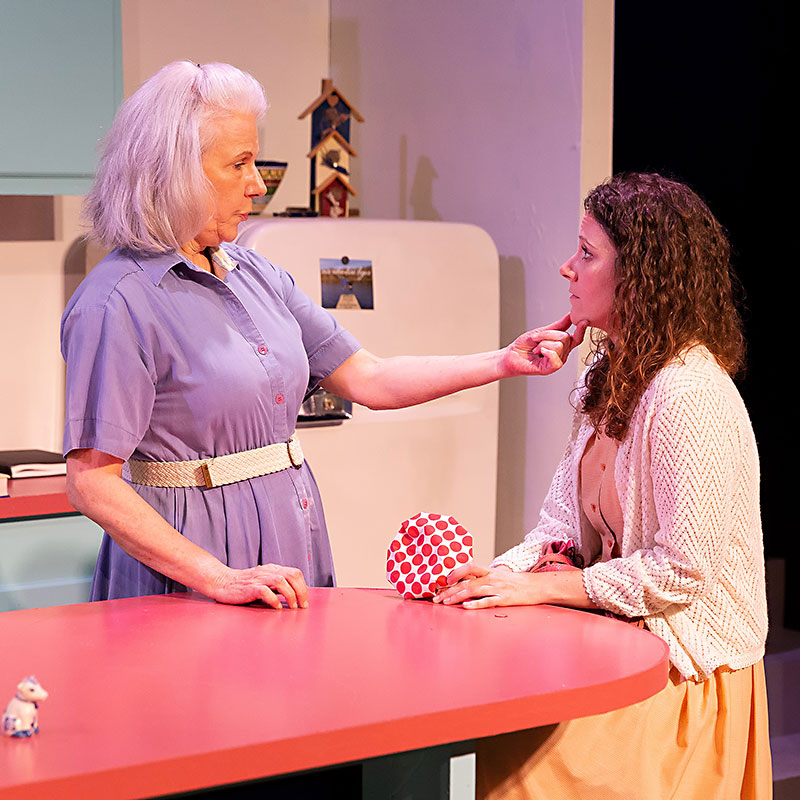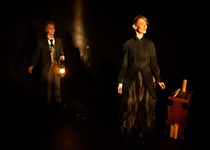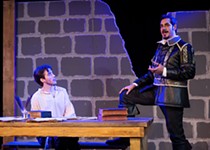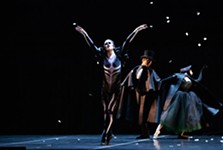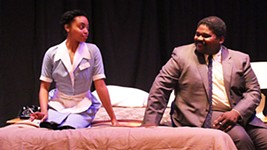Filigree Theatre's When We Were Young and Unafraid
Sarah Treem's drama revisits a time not that long ago when American women were controlled
Reviewed by Laura Jones, Fri., Feb. 15, 2019
A young, abused wife hides out on an impenetrable island. An underground safe house – part of a secret network that includes illegal abortions – shelters her. It's a society where a woman can't even open her own checking account without her husband's approval. No, you haven't fallen into season 3 of The Handmaid's Tale. This is the world of Filigree Theatre's new production, When We Were Young and Unafraid. That world was real, and it was ours.
The timing of the play, 1972, is not so long ago that you might not have lived through it, or else your parents did. While some history can sit in a box and never be examined – I, for one, refuse to watch another battle documentary on cable TV – the vibrant, multilayered world of second-wave feminism calls out for a revisit. So few playwrights have tried. In When We Were Young, Sarah Treem – also the Hollywood writer and showrunner behind hits like The Affair, House of Cards, and In Treatment – takes on the era and its struggles through four female characters (and one man) as they intersect with each other at a crossroads.
The play opens on Agnes, rivetingly portrayed by Linda Bradshaw. She's the flinty proprietor of a Pacific Northwest bed-and-breakfast that doubles as a hideout for beaten wives like Mary Anne (Laura Ray), her morose and mousy guest. Agnes' daughter Penny (Allison Paranka) lives there, too, occupying the teenage dream space between college plans and plotting to take the football star to the senior prom. As they work on reconstructing Mary Anne's face and life, they are joined by Hannah (Michelle Mary Schaefer), a drifter searching for a fabled feminist community that she believes will be the antidote to patriarchy's poison.
The play is set in a kitchen, the traditional "woman's place." Set designer Chris Conard has made it a pretty thing: eggshell blue with breezy curtains and a white stove that bakes cardamom muffins. It's both nurturing and claustrophobic, as mothers, like Agnes, can be. The women here help each other through various dilemmas, but really what they're doing is attempting escape. Some, like Agnes, choose nose-to-the-grindstone work, saving one woman at a time. Others, like Penny, learn the powers of feminine wiles. Hannah insists upon the paradise of lesbian separatism and "womyn-identified" love.
"Lesbian separatism?" I thought, watching the show. Now that is a blast from the past. The concept seems antiquated now in today's nonbinary, genderqueer alternative. But the power of When We Were Young and Unafraid is that it holds up a lens to a time when the female side of the binary was even less negotiable. It was not only controlled by men, but legally limited by government, too. Given the current state of the Supreme Court and Roe v. Wade, now is an excellent time to see Filigree's well-done and well-chosen play. The end of the second act brushes up against the landmark '73 decision. Flushed and excited, Hannah tells Agnes the victory for legalized abortion is near. Agnes barely raises her eyes from her kitchen table. "It'll turn back," she says. "It always does."
Here's hoping for Agnes', Mary Anne's, Hannah's, and all of our sake, it never does.
When We Were Young and Unafraid
Mastrogeorge Theatre,130 Pedernales
www.filigreetheatre.com
Through Feb. 23
Running time: 2 hr.





